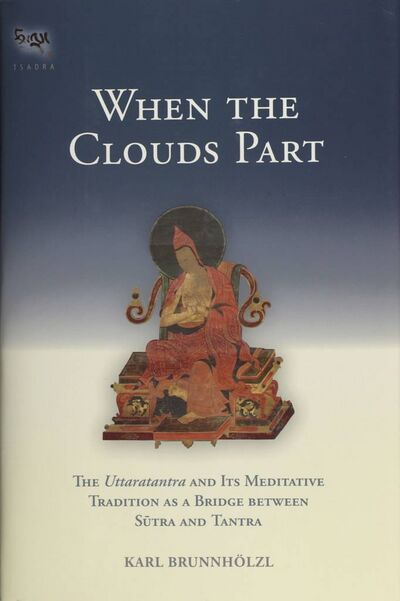((by SublimeText.Mediawiker)) |
((by SublimeText.Mediawiker)) |
||
| Line 7: | Line 7: | ||
Pellentesque vitae scelerisque ligula, a dictum felis. Nam malesuada malesuada justo. Morbi ligula risus, commodo elementum congue id, tempor at urna. Aenean tempus ante at lacus vulputate, non egestas erat porta. Nulla convallis vehicula ex a porta. Nunc dignissim dui sem, sit amet tincidunt risus rhoncus at. Nam tristique iaculis felis id commodo. Sed suscipit orci diam, quis imperdiet sem pellentesque non. Aenean sit amet orci ex. Praesent semper sem volutpat est pretium, cursus finibus est molestie. Morbi ut sapien dolor. Nunc bibendum odio viverra, mollis nibh quis, consequat ipsum. Vivamus faucibus, lorem ac consectetur aliquet, eros dui euismod mauris, id pulvinar lorem felis vel ante. | Pellentesque vitae scelerisque ligula, a dictum felis. Nam malesuada malesuada justo. Morbi ligula risus, commodo elementum congue id, tempor at urna. Aenean tempus ante at lacus vulputate, non egestas erat porta. Nulla convallis vehicula ex a porta. Nunc dignissim dui sem, sit amet tincidunt risus rhoncus at. Nam tristique iaculis felis id commodo. Sed suscipit orci diam, quis imperdiet sem pellentesque non. Aenean sit amet orci ex. Praesent semper sem volutpat est pretium, cursus finibus est molestie. Morbi ut sapien dolor. Nunc bibendum odio viverra, mollis nibh quis, consequat ipsum. Vivamus faucibus, lorem ac consectetur aliquet, eros dui euismod mauris, id pulvinar lorem felis vel ante. | ||
|BookToc=*[[/Abbreviations/]] ix | |||
*[[/Preface/]] xi | |||
*[[/Acknowledgments/]] xiii | |||
*[[/Translator's Introduction/]] 1 | |||
**[[/The Sūtra Sources of the ''Tathāgatagarbha'' Teachings/]] 3 | |||
**[[/Different Ways of Explaining the Meaning of ''Tathāgatagarbha''/]] 53 | |||
*** Explanations of ''Tathāgatagarbha'' in Indian Texts 54 | |||
***''Tathāgatagarbha'' as the Emptiness That Is a Nonimplicative Negation 55 | |||
***''Tathāgatagarbha'' as Mind’s Luminous Nature 57 | |||
***''Tathāgatagarbha'' as the Ālaya-Consciousness 63 | |||
***''Tathāgatagarbha'' as a Sentient Being 63 | |||
***''Tathāgatagarbha'' as the Dharmakāya, Suchness, the Disposition, and Nonconceptuality 64 | |||
***Tibetan Assertions on ''Tathāgatagarbha'' 65 | |||
**[[/The History and Transmission of "The Five Dharmas of Maitreya" from India to Tibet/]] 81 | |||
**[[/The ''Mahāyānottaratantra'' (''Ratnagotravibhāga'') and the ''Ratnagotravibhāgavyākhyā''/]] 93 | |||
***Texts and Authorships 93 | |||
***The Meanings of the Titles ''Ratnagotravibhāga'' and ''Mahāyānottaratantraśāstra'' 95 | |||
**[[/The ''Uttaratantra'' and Its Relationship with Yogācāra/]] 105 | |||
**[[/The Meditative Tradition of the ''Uttaratantra'' and Shentong/]] 123 | |||
***The Two Approaches of Explaining the ''Uttaratantra'' 123 | |||
***The Shentong Lineages and the Meditative Tradition of the ''Uttaratantra'' in the Jonang, Kagyü, and Nyingma Schools 131 | |||
***Indian Forerunners of Shentong, Early Tibetan Shentongpas, and Their Connection to the ''Uttaratantra'' 140 | |||
**[[/The ''Uttaratantra'' and Mahāmudrā/]] 151 | |||
*** Sūtra Mahāmudrā, Tantra Mahāmudrā, and Essence Mahāmudrā 151 | |||
***The Sūtra Sources of Mahāmudrā 165 | |||
***Maitrīpa’s Mahāmudrā of "Mental Nonengagement" 167 | |||
***Connections between Maitrīpa’s Mahāmudrā and the ''Uttaratantra'' 177 | |||
***Other Indian Nontantric Treatises on Mahāmudrā 184 | |||
***Gampopa’s Mahāmudrā and the ''Uttaratantra'' 190 | |||
***The Third Karmapa, Rangjung Dorje 202 | |||
***The Eighth Karmapa, Mikyö Dorje 206 | |||
***Tagpo Dashi Namgyal 212 Padma Karpo 214 | |||
***The Eighth Situpa, Chökyi Jungné 216 | |||
***Other Kagyü Masters on Mahāmudrā and the ''Uttaratantra'' 227 | |||
***Gö Lotsāwa’s Unique Mahāmudrā Interpretation of the ''Uttaratantra'' 243 | |||
***The Geden Kagyü Tradition of Mahāmudrā 278 | |||
**[[/Overview of the Indian and Tibetan Texts Presented in This Book/]] 283 | |||
***The ''Uttaratantra'' and Ratnagotravibhāgavyākhyā 283 | |||
***The Indian Texts on the ''Uttaratantra'' 288 | |||
***The Tibetan Commentaries 301 | |||
***Instruction Manuals 314 | |||
*[[/Translations/]] 329 | |||
**[[/Ratnagotravibhāga Mahāyānottaratantraśāstra/]] 331 | |||
***Chapter 1: The Three Jewels and the Tathāgata Heart 337 | |||
***Chapter 2: Awakening 415 | |||
***Chapter 3: The Buddha Qualities 429 | |||
***Chapter 4: Buddha Activity 437 | |||
***Chapter 5: The Benefit 455 | |||
**[[/Pith Instructions on "The Treatise on the Ultimate Continuum of the Mahāyāna" by Sajjana/]] 461 | |||
**[[/A Commentary on the Meaning of the Words of the "''Uttaratantra''"/]] 473 | |||
**[[/A Commentary on "The Treatise on the Ultimate Continuum of the Mahāyāna," The Heart of the Luminous Sun by Dashi Öser/]] 695 | |||
**[[/Instructions on "The Ultimate Continuum of the Mahāyāna" by Mönlam Tsültrim/]] 777 | |||
**[[/The Repository of Wisdom by Mönlam Tsültrim/]] 789 | |||
**[[/The Heart of the Matter of Luminosity by Mönlam Tsültrim/]] 797 | |||
**[[/Pith Instructions on the Wisdom at the Point of Passing when about to Die by Mönlam Tsültrim/]] 801 | |||
**[[/The Lamp That Excellently Elucidates the System of the Proponents of Shentong Madhyamaka by the Eighth Karmapa/]] 803 | |||
**[[/Guiding Instructions on the View of Great Shentong Madhyamaka— Light Rays of the Stainless Vajra Moon by Jamgön Kongtrul/]] 831 | |||
*[[/Appendix 1|Appendix 1: Selected Indian and Tibetan Comments on ''Uttaratantra'' I.27–28]] 855 | |||
*[[/Appendix 2|Appendix 2: Selected Indian and Tibetan Comments on ''Uttaratantra'' I.154–55]] 901 | |||
*[[/Appendix 3|Appendix 3: Indian and Tibetan Comments on Abhisamayālaṃkāra V.21]] 943 | |||
*[[/Appendix 4|Appendix 4: The Emptiness Endowed with All Supreme Aspects]] 953 | |||
*[[/Appendix 5|Appendix 5: The General Explanation of ''Tathāgatagarbha'' in Yeshé Dorje’s Commentary on the ''Uttaratantra'']] 963 | |||
*[[/Appendix 6|Appendix 6: The Presentation of the Purpose of Teaching ''Tathāgatagarbha'' in Yeshé Dorje’s Commentary on the ''Uttaratantra'']] 969 | |||
*[[/Appendix 7|Appendix 7:Comparison of the First Six Topics of the Fourth and Fifth Vajra Points in the ''Uttaratantra'' with the Same Six Topics in the Mahāyānasūtrālaṃkāra and the Mahāyānasaṃgraha]] 979 | |||
*[[/Appendix 8|Appendix 8: A Letter from Stainless Expanse and Awareness— a Casual Summary of the "''Uttaratantra''"]] 983 | |||
*[[/Notes/]] 985 | |||
*[[/English–Sanskrit–Tibetan Glossary/]] 1227 | |||
*[[/Tibetan–Sanskrit–English Glossary/]]1231 | |||
*[[/Bibliography/]] 1235 | |||
*[[/Index/]] 1259 | |||
}} | }} | ||
Revision as of 16:11, 17 April 2018
When the Clouds Part
Book
Book
"Buddha nature" (tathāgatagarbha) is the innate potential in all living beings to become a fully awakened buddha. This book discusses a wide range of topics connected with the notion of buddha nature as presented in Indo-Tibetan Buddhism and includes an overview of the sūtra sources of the tathāgatagarbha teachings and the different ways of explaining the meaning of this term. It includes new translations of the Maitreya treatise Mahāyānottaratantra (Ratnagotravibhāga), the primary Indian text on the subject, its Indian commentaries, and two (hitherto untranslated) commentaries from the Tibetan Kagyü tradition. Most important, the translator’s introduction investigates in detail the meditative tradition of using the Mahāyānottaratantra as a basis for Mahāmudrā instructions and the Shentong approach. This is supplemented by translations of a number of short Tibetan meditation manuals from the Kadampa, Kagyü, and Jonang schools that use the Mahāyānottaratantra as a work to contemplate and realize one’s own buddha nature. (Source: Shambhala Publications)
[[ | ]]
EmbedVideo does not recognize the video service "Vimeo".
| Citation | Brunnhölzl, Karl. When the Clouds Part: The Uttaratantra and Its Meditative Tradition as a Bridge between Sūtra and Tantra. Tsadra Foundation Series. Boston: Snow Lion Publications, 2014. |
|---|---|



